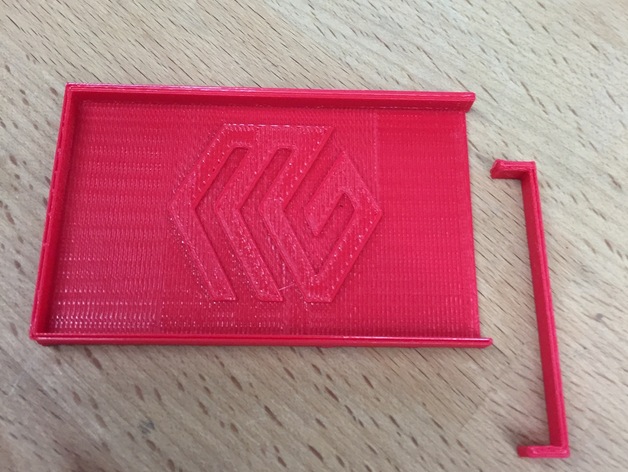
Problem-Solving 101: Design Thinking + Social Entrepreneurship
thingiverse
Problem-Solving 101: Mastering Design Thinking + Social Entrepreneurship Problem-Solving 101 is a dynamic, interdisciplinary project framework designed to introduce students to fundamental 3D design and problem-solving skills while fostering entrepreneurial thinking and global collaboration. The model showcased here – a customizable chocolate mold – exemplifies the project's versatility. To kick off this unit, we selected fair-trade chocolate as the central theme to demonstrate the transformative power of design and entrepreneurship through an engaging, tasty experience. Students will learn by doing, embracing challenges, and developing innovative solutions. Part 1: Client Problem Solving - Research (90 minutes) - Design/Sketch/Prototype (3 x 90-minute class periods) - Printing (outside class, if needed) - Modification/Finalize (90 minutes after client input) - Final Printing (outside class, if needed) Part 2: Global Connection Problem Solving - Research (90 minutes) - Global Conversation (using Skype for 90 minutes) - Design and Problem Solving (approximately 1 month with global counterparts) Materials Needed: - 3D Printer - Filament material - Printer control software - Slicing software - Wi-Fi Skills Learned: - HS-ETS1-2: Break down complex real-world problems into manageable parts through engineering. - HS-ETS1-3: Evaluate solutions to complex real-world problems based on prioritized criteria and trade-offs, considering cost, safety, reliability, aesthetics, social, cultural, and environmental impacts. - HS-ETS1-4: Use computer simulations to model the impact of proposed solutions on interactions within and between systems relevant to the problem. - RST.11-12.7: Integrate and evaluate multiple sources of information presented in diverse formats and media to address a question or solve a problem. - RST.11-12.8: Evaluate hypotheses, data, analysis, and conclusions in science or technical texts, verifying data when possible and corroborating or challenging conclusions with other sources. Duration of Lesson: About one week Preparation: - No prerequisite skills are required to participate, but students should come equipped with basic digital literacy and research skills, creativity, curiosity, and a willingness to learn from failure. Rubric and Assessment: See attached files for a sample rubric. Students will develop a design brief, journal, video/photograph the design process, and communicate with clients to meet their needs. Project Requirements: - Engineering Journal: - Brainstorming - Introduction - Design Brief (including materials) - Research (APA Citation) - Concept Sketches - Project Pictures - Construction pictures - Conclusion (what did you do? What did you learn?) - Portfolio (Blog): - Summary of project, including STEM principles - What did you do? - What did you learn? - Video documenting the project (1 to 5 minutes) - Pictures with captions - Proposal (embedded or hyperlink from Google Docs) - Presentation (embedded or hyperlink from Google Slides) - Citations (APA Format) - References Because this project is a customizable framework, the project leader is responsible for selecting knowledge sources and unit content. For our fair-trade example, see the following PDF document: http://www.fairtrade.net/fileadmin/user_upload/content/2009/about_fairtrade/documents/2016-Fairtrade-Global-Strategy-web.pdf Additional Assets: Follow this link to access the Design Brief Template from Boris Friedrich Milkowski: http://www.slideshare.net/BorisFriedrichMilkowski/the-bulletproof-design-brief-a-template-for-more-successful-innovation-projects
With this file you will be able to print Problem-Solving 101: Design Thinking + Social Entrepreneurship with your 3D printer. Click on the button and save the file on your computer to work, edit or customize your design. You can also find more 3D designs for printers on Problem-Solving 101: Design Thinking + Social Entrepreneurship.
